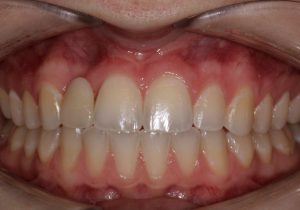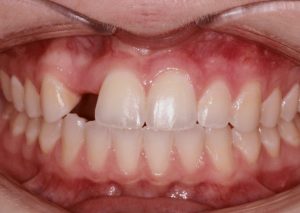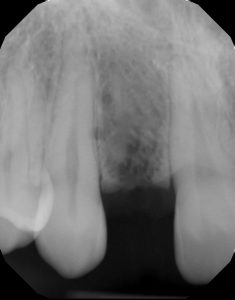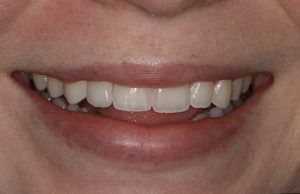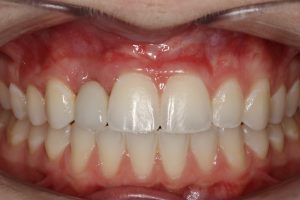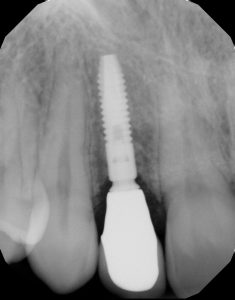Tina’s Dental Case Study
I recently saw Tina and her mother. She has waited to the age of 19 (she turns 19 in April) to have an implant placed in the area of her missing right lateral incisor (#7). At her implant evaluation appointment, a cone beam CT (CBCT) was taken to determine 3-dimensional bone availability.
Patient History and Concerns
For a young woman of just about 19, she has been very happy with the orthodontics done four to five years ago. Her orthodontist bonded a false tooth in the missing space for her, and it has not moved since. Both Tina and her mother were willing to wait and do the very best work possible. Ultimately, she wanted a dental implant which would be both aesthetic and functional long term.
Clinical Observations
Unfortunately, with the concave shape of the alveolus, there was plenty of height, but not enough width. This is very typical whenever there is a congenitally missing lateral incisor. If the implant were placed without some sort of grafting, she would be faced with a compromised implant position. On top of that, the development of a natural emergence profile would be less than ideal.
Diagnosis
Consideration for implant placement in the area of #7 in area with inadequate 3-dimentional bone.
Treatment and Recommendations:
Because of the above, I placed a long enough implant in a vertical position with both the top and the bottom of the implant in bone, but the body of the implant was outside of bone in the concave area. This required me to bury the implant and place a large graft with a reservable membrane over the facial aspect of the exposed implant. I then uncovered it four to five months later.
Once uncovered, her restorative dentist finished the process with a custom abutment and final crown for a beautiful, permanent end result.
Need to Discuss Your Oral Health Options with Dr. Eastman?
Contact our staff and we'll be sure to follow up with you within 24 hours.
